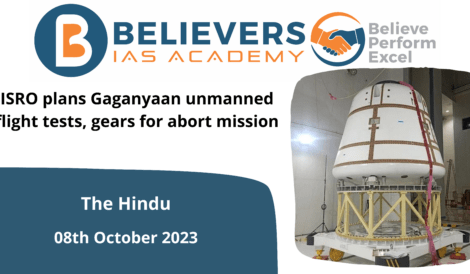ISRO Plans To Launch TeLEOS-2
Context:
The Indian Space Research Organisation (ISRO) will launch Singapore’s TeLEOS-2 satellite on April 22, from the Satish Dhawan Space Centre in Sriharikota.
Points to Ponder:
- On April 22, the TeLEOS-2 satellite of Singapore will be launched by the Indian Space Research Organisation (ISRO) from Sriharikota’s Satish Dhawan Space Centre.
- The Polar Satellite Launch Vehicle (PSLV), which will perform the launch, is set to go off at 2.19 p.m.
- TeLEOS-2 is an Earth Observation Satellite created by ST Engineering, and this flight will mark the PSLV’s 55th mission.
- TeLEOS-1, the first Singapore commercial Earth observation satellite, was launched into a low Earth orbit by ISRO in 2015 for use in remote sensing. Singapore has had nine satellites launched by the ISRO to date.
- The PSLV-C55 is the third launch by ISRO this year; the previous PSLV mission took place in November of the previous year.
TeLEOS-1
- Six Singaporean satellites were launched into a 550 km circular orbit inclined at 15 degrees to the equator by India’s Polar Satellite Launch Vehicle during its thirty-second flight (PSLV-C29). TeLEOS-1, the largest and heaviest of the six satellites, weighs 400 kg. The other five are co-passenger satellites, which include two micro- and three nano-satellites.
- The five co-passenger spacecraft that was launched alongside TeLEOS-1 are VELOX-CI (a 123 kg microsatellite), VELOX-II (a 13 kg 6U-Cubesat technology demonstrator), Athenoxat-1 (a nano-satellite technology demonstrator), Kent Ridge-1 (a 78 kg microsatellite), and Galassia (a 3.4 kg 2U-Cubesat).
- On December 16, 2015, PSLV-C29 successfully launched all six Singaporean satellites from the Satish Dhawan Space Centre (SDSC), SHAR, Sriharikota.
- Antrix Corporation Limited (ACL) and ST Electronics (Satcom & Sensor Systems), Singapore, signed into a Launch Services Agreement in February 2014 for the launch of TeLEOS-1, an earth observation satellite from ST Electronics that will also carry five co-passenger satellites from Singapore universities.




